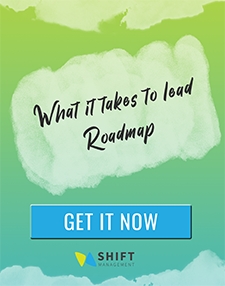We’ve all been there…stuck in a meeting fighting hard to keep either our eyes open or to stop them from rolling. And, as comedian Dave Barry so aptly highlights in the quotation above, we might just be left feeling that our potential has somehow been sapped because we are sitting in this chair, surrounded by these people, going through these same points in the same way toward the same end.
And this brings to mind two key questions:
- What is an effective meeting?
- How can we improve meeting satisfaction?
The perception of effectiveness in a meeting and its link to satisfaction is directly related to how well the meeting objective is matched to the meeting methods being used to meet communicated outcomes. Generally speaking satisfaction will be highest when time is well used, progress is made towards goals and participants feel safe to express themselves and valued for their contributions. In a nutshell, meetings have to meet human needs: informational, personal, social, collaborative and operational.
And this is no simple task. Because of the complex nature of human needs, things seem to go wrong – and stay wrong – with more meetings than the majority of us care to remember. Why? Mainly because the main reason for each phase of the meeting hasn’t been correctly communicated to participants. Without understanding the “why” behind the meeting discussions or presentations, people often get frustrated, often without knowing exactly why or what to do about it.
One thing that can be helpful to address this dilemma and to get a solid footing on meeting effectiveness is to accurately match the purpose for the meeting with the type of questioning best suited to that purpose. Here are a few examples from Ingrid Bens’ Facilitation at a Glance manual[1]. Ingrid Bens suggests first identifying what you want the meeting to accomplish and then consciously using the type of questioning that is most likely to get the group moving in that direction.

If you want to…
#1) Allow people to respond voluntarily or avoid putting an individual on the spot then…ask a question like:
- “What experiences have any of you had with this problem?”
#2) Get the group to consider challenging issues then… ask probing questions like:
- “How would you describe the current situation to another department/organization?”
- “How would your most important customer see this issue?”
- “How do you feel about this personally?”
- “Who/what contributes to this problem?”
- “How do we each contribute to the problem?”
- “On a scale of 1-5 with 5 as very serious, how would you rate the seriousness of this problem?”
#3) Probe an issue to go deeper then… ask:
- “Can you think of any reasons why we should not proceed?”
- “Is there anything we have not yet considered or that does not yet sit right with the group?”
Knowing what you really want to get out of the meeting and then planning the kind of questions that will complement the outcomes you seek can dramatically increase your chances of having an effective meeting. Participants leave satisfied that they had their needs met and got something done in the process. Facilitators have something concrete to work with and have won over the team in the process. Who knows? You might just find that people are showing up a bit early to get a good seat.
Want to know more about planning and running effective meetings?
Click below to download our FREE white paper “Facilitating Productive, Interactive, Engaging Meetings” now!
Reference:
[1] Bens, Ingrid. (2000). Facilitation at a glance! A pocket guide of tools and techniques for effective meeting facilitation. Memory Jogger publication of Goal QPC and AQP: Boston, USA. Pgs. 6-9, 17.

“If you had to identify, in one word, the reason why the human race has not achieved, and will never achieve, its full potential, that word would be ‘meetings.'”







